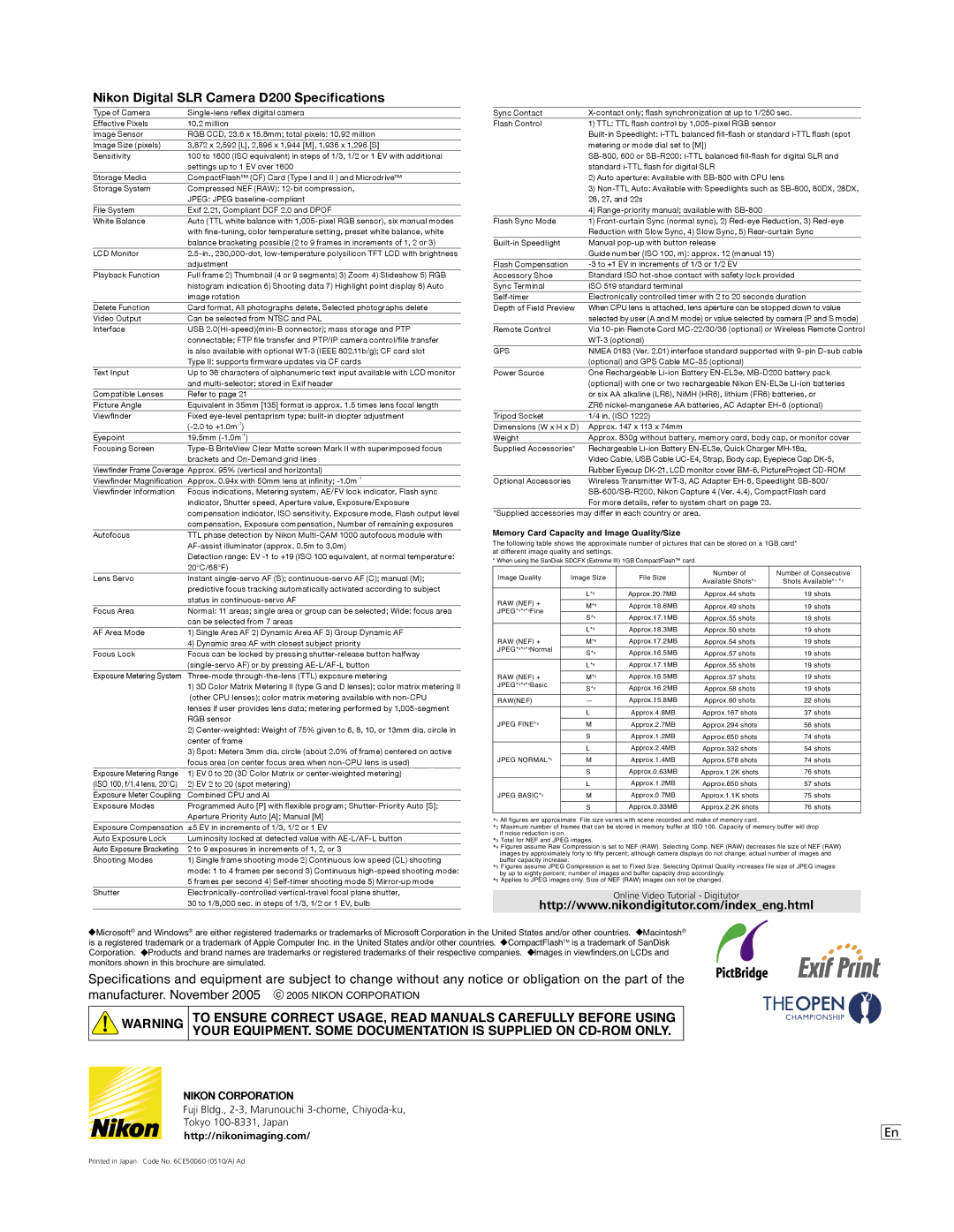D200 specifications
The Nikon D200, introduced in late 2005, was a game-changer in the digital SLR (DSLR) market, appealing to both professional and advanced amateur photographers. This camera embodied Nikon’s commitment to innovation and quality, offering a compelling blend of technologies and features that enhanced the photographic experience.One of the D200's standout characteristics is its 10.2-megapixel DX-format CMOS sensor, which provided exceptional image quality and detail. This resolution was particularly significant for its time, allowing photographers to create large prints and crop images without sacrificing clarity. The camera's ISO sensitivity ranges from 100 to 1600, expandable to 3200, enabling users to capture sharp images even in low-light conditions.
The D200 also features a sophisticated 3D Color Matrix Metering II system, which evaluates the exposure based on color, brightness, and distance. This technology enhances the accuracy of exposure settings, ensuring well-balanced and correctly exposed images. Complementing this metering system is the camera's fast and responsive 11-point autofocus system, which delivers quick and precise focusing in various shooting scenarios.
Build quality is another highlight of the Nikon D200. With a rugged, weather-sealed magnesium alloy body, it is designed to withstand challenging conditions, making it a reliable choice for outdoor photographers. The camera is also equipped with a 2.5-inch LCD screen that provides clear playback and image review, along with a robust battery life allowing for extended shooting sessions.
Furthermore, the D200 supports various shooting modes, including continuous shooting at up to 5 frames per second, which is beneficial for capturing action shots. The camera's compatibility with Nikon's extensive range of F-mount lenses adds versatility, allowing photographers to choose from wide-angle to telephoto options tailored to their needs.
The D200 supports both JPEG and RAW file formats, providing flexibility in post-processing. Its built-in flash and support for external flash units add to its functionality, making it suitable for various lighting situations.
Overall, the Nikon D200 remains a respected model in the history of digital cameras, praised for its sturdy build, impressive image quality, and robust feature set that meets the demands of serious photographers. While newer models have since emerged, the D200's legacy endures due to its exceptional performance and reliability.

